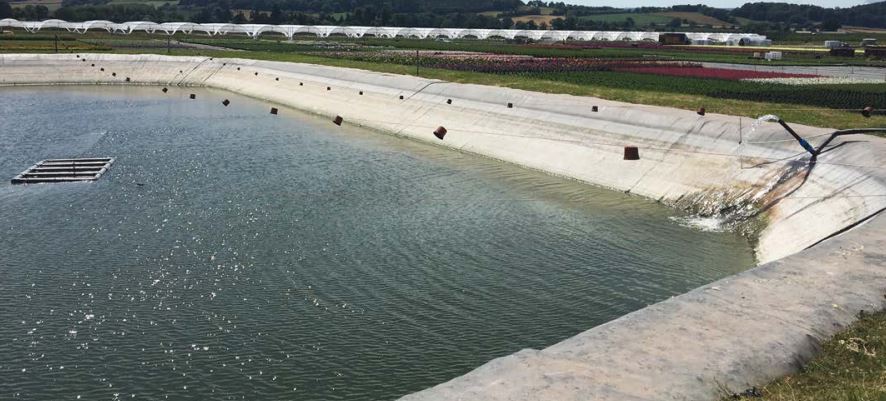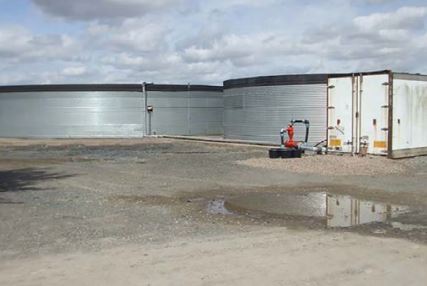Please click here to access the main AHDB website and other sectors.
- Home
- Knowledge library
- Water storage and management for horticulture
Water storage and management for horticulture
Reservoirs and tanks can greatly improve the water resilience of your business. Find out more about the key points to consider when choosing between the two.
This information was last updated in 2019.
Go back to the main page: establishing a resilient water supply
Reservoirs
Reservoirs can greatly improve business water supply resilience through the irrigation season.
- Taking water daily and storing it requires little energy and works well if your source flow is low.
- Having a larger reservoir also means you can store water abstracted or harvested during peak flow or rainfall periods, usually in the winter; and even in the summer if the Environment Agency permits the filling of winter storage reservoirs with summer flood waters.
- Reservoir construction requires planning permission and compliance with the Reservoirs Act 1975.
- Large, raised reservoirs of 25,000 m3 capacity (10,000 m3 in Scotland) above natural ground level must be designed by a qualified panel engineer and registered with the environmental regulator (this figure will be reduced to 10,000 m3 in England after a pending change in legislation).
Reservoir construction has been financially supported through various grant schemes in the past and it remains to be seen what new schemes may be available in the future.
It is important to have all the necessary permissions and records in place to be able to access funding from such schemes.
 AHDB
AHDB
Figure 1. A reservoir suppling a commercial horticultural production site.
Tanks
If your business does not have enough land for a reservoir, then short-term resilience can be improved by installing storage tanks.
You can determine the optimum size of tank for your business by making sure it holds at least enough water to supply your peak irrigation needs for 48 hours if there is a mains failure.
 John Adlam
John Adlam
Figure 2. Water storage tanks on a horticulture production site.

